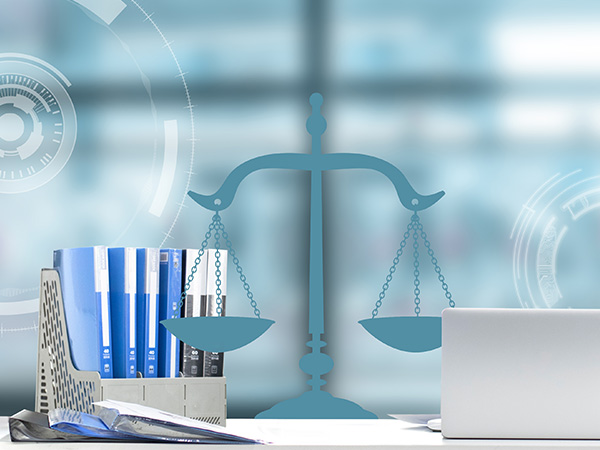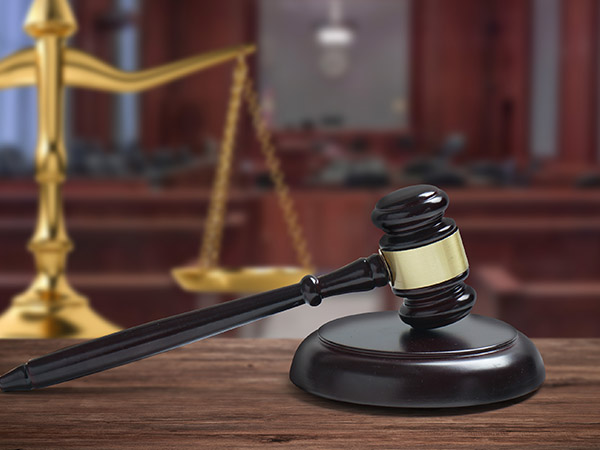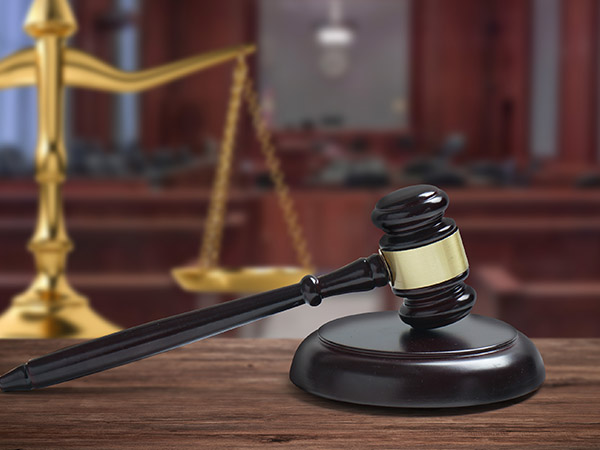(II) Does the text claimed by the plaintiff constitute written works?
Written works refer to novels, poems, essays, papers and other works expressed in written form. The following factors are generally considered when examining whether the relevant written content constitutes a work: (1) whether it is the creation of natural persons within the scope of literature, art and science; (2) whether it is expressed in written form; (3) whether it can be reproduced; and (4) whether it is original. In this case, the written content of the Article Involved involves the judicial analysis of the film industry, which falls in the scope of scientific creation. It is expressed in written form and can be reproduced. Therefore, the focus of dispute between the plaintiff and the defendant is whether the text of the Article Involved is original.
The Article Involved is a written expression of the overview of cases of film works accepted by Beijing courts, status of lawyer representation etc. within a certain period of time. The plaintiff claims that in order to create the Article Involved, it selected keywords corresponding to the creation purpose, used these keywords to search and screen data in Wolters Kluwer Database, sort out and analyze the judgment documents involved in the search results, and finally form the Article Involved. However, the defendant argues that the Article Involved is not original and cannot constitute a work since it was automatically generated by using the “Visualization” function of Wolters Kluwer Database, not obtained by the plaintiff through his own intellectual work.
Given the defendant’s arguments, the Court should analyze and determine the nature of the analysis report automatically generated by Wolters Kluwer Database and the ownership of the rights and interests in the analysis report.
As to whether the analysis report automatically generated by Wolters Kluwer Database constitute a work, seen from the generation process, the analysis report automatically generated by selecting the corresponding keywords and using the “Visualization” function involves the judicial analysis of the film industry, conforms to the substantive requirements of form on written works, and reflects certain originality with the selection, judgment and analysis of relevant data. However, the Court holds that originality is not a sufficient condition for written works. According to the prevailing law, written works should be created by natural persons. Although with the development of science and technology, “works” intelligently generated by computer software are increasingly close to works of natural persons in content, form and even expression, it is inappropriate to break the basic norms of civil subjects if the intellectual and economic input of such software can be fully protected within the rights protection system of prevailing laws, given the actual level of technological and industrial development. Therefore, the Court holds that creation and completion by natural persons should still be a necessary condition for “works” defined in the Copyright Law. During the whole generation process of the above analysis report, two steps have seen the participation of natural persons: the software development step and the software use step. The software developer (owner) did not input keywords for search according to his needs, nor original were expression of their thoughts or feelings conveyed in the analysis report. Therefore, the analysis report should not be deemed as being created by the software developer (owner). Similarly, the software user only inputs keywords for search, so the analysis report automatically generated by using the “Visualization” function is not an original expression of the user’s thoughts and feelings. So neither should the analysis report be deemed as being created by the software user. To sum up, neither the software developer (owner) nor the user should be the author of the analysis report. The analysis report is formed by Wolters Kluwer Database through input of keywords based on the algorithm, rules and templates. In a sense, it can be recognized that Wolters Kluwer Database “created” the analysis report. Therefore, though original, it is still not a “work” defined in the Copyright Law, since it is not created by a natural person. Wolters Kluwer Database cannot be recognized as the author and enjoys relevant rights stipulated in the Copyright Law. Regarding the signature of the analysis report, no one except its creator can sign as the author, be it the software developer (owner) or the user. Instead, the logo of the software generating the analysis report shall be displayed in the report to indicate the report is automatically generated by the software, in order to protect the public’s right to be informed, maintain good faith of the society, and be conducive to cultural communication.
However, that analysis report does not constitute a work does not mean that it can enter the public domain and be freely used by the public. The analysis report, produced with the input of both the software developer (owner) and the software user, has its communication value. The absence of protection of its rights and interests will be adverse to the communication of the input result (i.e., the analysis report), making it difficult to play the report’s role. The software developer (owner) can charge software use fees or resort to other means to pursue benefits, for which the input in the software development has already been rewarded. So the developer would be less motivated to communicate the analysis report that is generated by the software user based on different use requirements and retrieval settings. Therefore, if the software developer (owner) is vested with the relevant rights and interests of the analysis report, it will not actively exercise these rights and interests, which would not be conducive to the development of cultural communication and scientific undertakings. By contrast, the software user, having invested through paid use and having the analysis report generated by setting keywords based on its own needs, is motivated to promote and would expect further use and communication of the analysis report. Therefore, the software user should be vested with the relevant rights and interests of the analysis report to encourage use and communication of the analysis report. Otherwise, the software will have less users. Even those who do use the software will be reluctant to further communicate such analysis reports. In the end, it would hinder the cultural communication and value play. As discussed above, software users cannot sign the analysis report as the author. However, they may use reasonable ways to indicate their ownership of relevant rights and interests, and to protect their legitimate rights and interests and the public’s right to be informed.
Whether the Article Involved is automatically generated by Wolters Kluwer Database? In this case, in order to find out the relevant facts, the Court organized the two parties to conduct an inquest of the “Visualization” function of Wolters Kluwer Database. With the search keywords provided by the defendant, Big Data Reports 1 and 2 were automatically generated. A comparison shows that both the Article Involved and the Big Data Report1 use only one sentence to describe the number of cases of the film industry heard by Beijing courts, both suggesting that Chaoyang District People’s Court accepted the largest number of cases, followed by Haidian District People’s Court. But they are expressed in different words and account for only a tiny part of the whole text. Apart from that, the Article Involved is completely different from Big Data Reports 1 and 2 in literal contents and expressions. Thus the text of the Article Involved was not automatically generated by the “Visualization” function of Wolters Kluwer Database but was independently created by the plaintiff. Combining its originality, the text shall constitute a written work. Therefore, the defendant’s argument is not well founded.
(3) Whether the Article Involved is a Legal Person’s Work
The Copyright Law of the PRC stipulates that the citizen who creates a work is its author. When a work is created according to the will and under the sponsorship and the responsibility of a legal person or other organization, such legal person or other organization shall be deemed to be the author of the work. In the absence of proof to the contrary, the attribution of a work’s ownership can be presumed according to its signature. In this case, the plaintiff claims that the Article Involved is a legal person’s work and that its copyright is vested in the plaintiff. The Court holds that according to the facts ascertained, the Article Involved was first published on the WeChat official account operated by the plaintiff with the signature of the plaintiff, without mentioning any other subject involved in its creation; the Article Involved is the first in a series of reports planned by the plaintiff, with the preface and advance notice part of the series of reports indicating that the Article Involved is the work result completed by the plaintiff; the contents of the Article Involved are also analysis and evaluation made from the perspective of the plaintiff; the plaintiff submitted a number of documents formed in the creation process, which on the whole can reflect the law firm’s creation process of the Article Involved although some of the documents were stored after the publication of the Article Involved. Therefore, in the absence of proof to the contrary, the Court decides that the Article Involved is a legal person’s work created by the plaintiff, who is the proper subject in the case and has the right to bring a civil lawsuit against the infringement.
Second, Whether the Defendant Has Infringed the Copyright of the Plaintiff
In this case, the plaintiff claims that the defendant is the operator of Baijiahao platform and, as the network service provider, has extremely strong control and management capabilities over the latter that provides services to enable content creators’ content publishing, content monetization and fan management. The defendant argues that Baijiahao platform is an information storage platform, to which the Court does not object. During the trial of the case, the plaintiff once claimed that the article accused of infringement was provided by a user of Baijiahao but later claimed that it was provided by the defendant. The Court holds that the possibility of the operator providing content services (works, performances, audio and video products etc.) while providing technical services such as information storage space services cannot be ruled out. Given that the plaintiff changed its claim alleging that the defendant provided the article accused of infringement, the Court will comprehensively review and determine the specific situation of the defendant’s services based on available evidence.
(I) Does the Article Accused of Infringement Exist on Baijiahao Platform?
The Court holds that since the plaintiff claims that the defendant provided the article accused of infringement, it shall bear the corresponding burden of proof. Now that the plaintiff has submitted evidence and preliminarily proved that the article accused of infringement can be obtained through Baijiahao platform, the defendant shall bear the burden of proof if it insists that it did not provide the contents. In this case, the plaintiff submitted a screenshot of the webpage of the article accused of infringement, showing that there was the article accused of infringement on Baijiahao platform operated by the defendant. In order to ensure the authenticity of the forensics process and the integrity of the relevant webpage, the plaintiff fixed the webpage of the corresponding website with the “Static Webpage Forensics” function of the Notarization Cloud Platform, for which Beijing Guoxin Notary Office issued the corresponding electronic data storage letter. The Court holds that the electronic data submitted by the plaintiff have proved that there was the article accused of infringement on Baijiahao platform, so the plaintiff has fulfilled its burden of preliminary proof while the defendant should bear the civil responsibility of not providing proof since it has failed to submit any evidence to the contrary to prove that it did not carry out the above act. In this case, the defendant refuses to accept the authenticity of the corresponding electronic data on the ground that the plaintiff did not fix the above electronic data by notarization. The Court holds that the plaintiff’s choice of the form of the above evidence submitted is based on factors such as the type of evidence and whether the preservation procedure is complicated or not. Although evidence supported by notarial certificates would be more authoritative, it cannot be considered that only evidence preserved by notarization is authentic. Since the defendant raised objection to the authenticity of the above electronic data, the Court will examine their generation, collection, storage and transmission process based on cross-examination results to determine if there is any defect in the whole process. The electronic data submitted by the plaintiff were obtained by means of evidence collection, fixing and anti-tampering techniques such as block chain. The main body generating the electronic data and the time of generation are clearly stated. The content of the electronic data is clear, objective and accurate, and can be verified by electronic fingerprint. Regarding the statement made in the storage letter, the Court holds that the content of the statement suggests that the notary office was undertaking the electronic data storage business but not evidence preservation through notarization. It should be an informative statement made by the notary office at the beginning of the new business rather than a suggestion that the authenticity of the above electronic data is in doubt. To sum up, the Court ascertains that at the time when the plaintiff collected evidence, the article accused of infringement existed on Baijiahao platform operated by the defendant.
(II) Nature of Services Provided by the Defendant to Users
Generally speaking, when a plaintiff brings a civil lawsuit, it should clearly state what kind of infringement the defendant has committed. In this case, when the plaintiff lodged the lawsuit, it claimed that a user of Baijiahao – Dianjinss provided the article accused of infringement. But before the end of the court debate, the plaintiff changed its claim, alleging that the defendant provided the article accused of infringement, despite no substantial change to the facts which it bases its lawsuit on. In order to find out the facts and apply the correct law, the Court conducted a comprehensive review of the nature of the defendant’s acts.
According to the evidence such as webpage screenshots submitted by the plaintiff, the webpage of the article accused of infringement on Baijiahao platform bears Dianjinss’ signature and brief introduction, which alone is not enough to identify Dianjinss as the provider of the article accused of infringement. The defendant, arguing that it only provides information storage space services, shall bear the burden of proof to prove it. However, the defendant did not provide evidence on the ground that the article accused of infringement does not exist on the platform. The Court holds that the defendant, as a network service provider, holds and manages relevant user information and information retained when providing relevant services. Now that the plaintiff has submitted preliminary evidence to prove the existence of article accused of infringement on Baijiahao platform, the defendant shall further provide evidence or clues, such as relevant evidence to prove whether the uploader of the article accused of infringement on Baijiahao platform exists or not, from the perspective of facilitating the Court to find out the facts and facilitating the obligee to safeguard its legitimate rights and interests; and if the uploader exists, the defendant shall provide the user name and contact information of the uploader, as well as the IP address, uploading time etc. stored when providing technical services for the uploader, for the comprehensive review by the Court. In this case, since the defendant did not provide relevant evidence about the uploader, the Court will not admit its argument that the defendant only provides information storage space services in this case. The Court determines that the defendant provided the article accused of infringement to the public through the information network.
During the trial of this case, both parties agreed that the article accused of infringement no longer exists on Baijiahao platform and the plaintiff no longer requires the defendant to desist from infringement. To this the Court has no objection.
(III) Has the Defendant Infringed the Rights Enjoyed by the Plaintiff?
The defendant, providing without permission the content of the article accused of infringement on Baijiahao platform operated thereby to the public so that they may obtain such content at selected time and place, has infringed on the plaintiff’s right of information communication on networks and shall bear corresponding civil liabilities. Therefore, this Court supports the plaintiff’s claim for compensation for economic losses and will determine the amount of compensation according to the nature of the Article Involved, the defendant’s subjective fault, the circumstances of the infringement, and other factors. The written content of the Article Involved involves highly professional judicial analysis and lots of characters. The defendant, as a well-known company in the industry, operates a wide range of services on Baijiahao platform. The defendant provided the article accused of infringement to the public just one day after the Article Involved was published on the plaintiff’s WeChat official account. The Court does not support the plaintiff’s claim that it enjoys rights to the graphs in the Article Involved. Given all this, the compensation claimed by the plaintiff is too high and will not be fully supported by the Court. The reasonable expenses incurred by the plaintiff to stop the infringement shall be borne by the defendant.
The plaintiff claims that the defendant has violated its right of authorship. The Court holds that the right of authorship is the right to claim authorship and to have the author’s name indicated on his works. In this case, the plaintiff marked its name and “original” in the Article Involved after finishing its creation. However, in the article accused of infringement provided by the defendant, not only the plaintiff’s signature was deleted, but the word “Dianjinss” appeared, which is enough to lead the relevant public to mistake Dianjinss for the author, thus infringing on the right of authorship enjoyed by the plaintiff. The defendant should apologize to the plaintiff in a reasonable way and eliminate the ill influence.
The plaintiff also claims that the defendant has violated its right of integrity. The Court holds that the right of integrity refers to the right to protect one’s work from distortion and falsification. In this case, a comparison between the article accused of infringement on Baijiahao platform and the Article Involved on the plaintiff’s WeChat official account shows that the former deleted the preface and retrieval overview created by the plaintiff for the whole series of works, the annual trend chart of the number of cases of the film industry, and the annotation part at the end of the Article Involved. The above contents are not the main contents reflecting the original expression of the Article Involved. The ideas expressed by the plaintiff are not distorted or falsified. Therefore, this Court does not support this claim of the plaintiff.
To sum up, in accordance with the provisions of Article 9, Item 2, Item 4 and Item 12 of Paragraph 1 of Article 10, Article 47, Article 48, and Article 49 of the Copyright Law of the People’s Republic of China, the Court hereby rules as follows:
I. The defendant Beijing Baidu Netcom Science & Technology Co., Ltd. shall, within seven days from the effective date of this judgment, publish an apology statement on the homepage of Baidu Baijiahao platform (baijiahao.baidu.com) for 48 consecutive hours to eliminate the ill influence for the plaintiff Beijing Film Law Firm (the content of the statement must be reviewed by the Court. If the defendant Beijing Baidu Netcom Science & Technology Co. Ltd. refuses to perform this order, the Court will publish the main contents of the judgment in a nationwide newspaper at the cost of the defendant);
II. The defendant Beijing Baidu Netcom Science & Technology Co., Ltd. shall, within seven days from the effective date of this judgment, compensate the plaintiff Beijing Film Law Firm RMB 1,000 for its economic losses and RMB 560 for its reasonable expenses, totaling RMB 1560;
III. Other claims of the plaintiff Beijing Film Law Firm are dismissed.
Failing to perform any obligation of pecuniary payment within the period stated in the judgment, the defendant shall pay double interest for the debt for the period of deferred performance in accordance with Article 253 of the Civil Procedure Law of the People’s Republic of China.
The case acceptance fee of RMB 64 (paid in advance by the plaintiff Beijing Film Law Firm) shall be borne by the defendant Beijing Baidu Netcom Science & Technology Co., Ltd. and paid within 7 days from the effective date of this judgment.
If refusing to accept the judgment, either party may, within fifteen days since the date of service of the judgment, submit an appeal to the Court with copies prepared based on the number of the opposite party to appeal to Beijing Intellectual Property Court.
Presiding judge Lu Zhengxin
Judge He Cheng
Judge Han Bing
Beijing Internet Court (Seal)
April 25, 2019
This copy is checked to be consistent with the original.
Judge Assistant Lu Ning
Clerk Li Minglei











